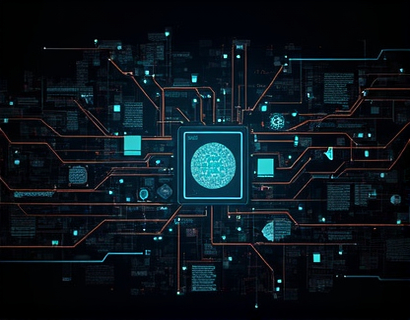Advanced Cybersecurity Strategies for High-Net-Worth Individuals, Celebrities, and Cryptocurrency Professionals
In the realm of digital assets and high-stakes financial transactions, cybersecurity is not just a recommendation but a necessity. For high-net-worth individuals (HNWIs), celebrities, and entrepreneurs, especially those involved in the cryptocurrency sector, the risks are magnified. Sophisticated cyber threats pose a significant danger to both digital assets and personal data. This article delves into advanced digital defense strategies and operational security measures tailored to protect the most valuable and sensitive information from these sophisticated threats.
Understanding the Threat Landscape
The cybersecurity landscape for HNWIs, celebrities, and cryptocurrency professionals is uniquely challenging. These individuals often deal with large sums of money, valuable intellectual property, and sensitive personal information, all of which are prime targets for cybercriminals. The cryptocurrency space, in particular, attracts malicious actors due to the anonymity and decentralization it offers. Understanding the specific threats is the first step in fortifying defenses.
Ransomware attacks, where cybercriminals encrypt data and demand ransom for its release, are a common threat. Phishing scams, which trick users into revealing login credentials or financial information, remain prevalent. Advanced persistent threats (APTs) involve sophisticated, long-term attacks aimed at stealing data or disrupting operations. Insider threats, where trusted individuals misuse their access, can also cause significant damage. For those in the cryptocurrency sector, smart contract vulnerabilities and exchange hacks are additional concerns.
Tailored Cybersecurity Solutions
Given the unique risks, tailored cybersecurity solutions are essential. These solutions must be comprehensive, adaptive, and deeply integrated into the client's operations. For HNWIs, celebrities, and cryptocurrency professionals, a one-size-fits-all approach is inadequate. The following advanced strategies and operational security measures are designed to provide elite protection.
Multi-Layered Defense Architecture
A multi-layered defense architecture, also known as defense in depth, is crucial. This approach involves multiple security controls at different levels to protect against various types of threats. At the perimeter, robust firewalls and intrusion detection systems (IDS) monitor and filter incoming traffic. Network segmentation isolates critical systems to limit the spread of breaches. Endpoint security solutions protect individual devices from malware and unauthorized access.
For cryptocurrency professionals, additional layers include secure cold storage for digital assets and multi-factor authentication (MFA) for all access points. Regular security audits and penetration testing help identify and mitigate vulnerabilities before they can be exploited.
Advanced Threat Detection and Response
Advanced threat detection systems use machine learning and artificial intelligence to identify unusual patterns and potential threats in real-time. These systems can detect both known and unknown threats, providing a proactive defense. Security information and event management (SIEM) solutions aggregate and analyze logs from various sources to detect anomalies and correlate events for faster response.
Incident response plans are critical. These plans should be regularly updated and tested to ensure that the team can respond effectively to any security breach. Automated response mechanisms can quickly isolate affected systems and initiate recovery processes, minimizing damage and downtime.
Operational Security Measures
Operational security measures focus on the processes and practices that protect information and assets. For HNWIs and celebrities, this includes strict access controls and regular reviews of user permissions. Sensitive data should be encrypted both at rest and in transit. Physical security is also vital, with secure storage for hardware and restricted access to facilities.
For cryptocurrency professionals, operational security extends to the development and deployment of smart contracts. Code audits and formal verification methods ensure that smart contracts are free from vulnerabilities. Using trusted development environments and following best practices for coding can prevent common exploits.
Privacy and Anonymity
Maintaining privacy and anonymity is crucial for high-profile individuals and cryptocurrency users. Virtual private networks (VPNs) and secure browsing extensions help mask online activities. Privacy-focused cryptocurrencies and mixing services can enhance transaction anonymity, though they come with their own risks and legal considerations.
For those concerned about tracking and surveillance, using decentralized communication tools and avoiding metadata exposure are essential. Regularly updating software and keeping systems patched helps protect against known vulnerabilities that could be exploited to compromise privacy.
Customized Security Training and Awareness
Human error remains one of the most significant security risks. Customized security training and awareness programs are vital to educate clients about best practices and potential threats. Training should cover topics such as recognizing phishing attempts, safe browsing habits, and secure password management.
Simulated phishing exercises can help reinforce learning and identify areas for improvement. Regular updates on the latest threat trends and mitigation strategies ensure that clients remain vigilant and informed. For high-profile individuals, training should also address the unique risks associated with their public presence and the attention they attract.
Continuous Monitoring and Compliance
Continuous monitoring is essential to detect and respond to threats in real-time. This involves monitoring network traffic, system logs, and user activities for signs of compromise. Continuous monitoring tools can alert security teams to potential issues, enabling swift action.
Compliance with industry standards and regulations is also crucial. For cryptocurrency professionals, adhering to regulations such as the General Data Protection Regulation (GDPR) and the New York Department of Financial Services (NYDFS) cybersecurity requirements is mandatory. Regular audits and assessments ensure ongoing compliance and identify areas for improvement.
Building a Security Culture
Creating a security-conscious culture within an organization is as important as implementing advanced technologies. Leadership must prioritize security and set the tone for the entire organization. This includes allocating sufficient resources to cybersecurity initiatives and fostering an environment where security is everyone's responsibility.
Encouraging open communication about security concerns and fostering a culture of transparency can help identify and address potential issues before they become critical. Regular security meetings and updates keep everyone informed and engaged in the security process.
Conclusion
For high-net-worth individuals, celebrities, and cryptocurrency professionals, the stakes of cybersecurity are incredibly high. By implementing advanced digital defense strategies and operational security measures, these individuals can significantly reduce the risk of cyber threats. A multi-layered defense architecture, advanced threat detection, customized security training, and a strong security culture are essential components of an elite cybersecurity framework. While no solution is foolproof, a proactive and comprehensive approach can provide the peace of mind and protection needed in today's complex digital landscape.










































